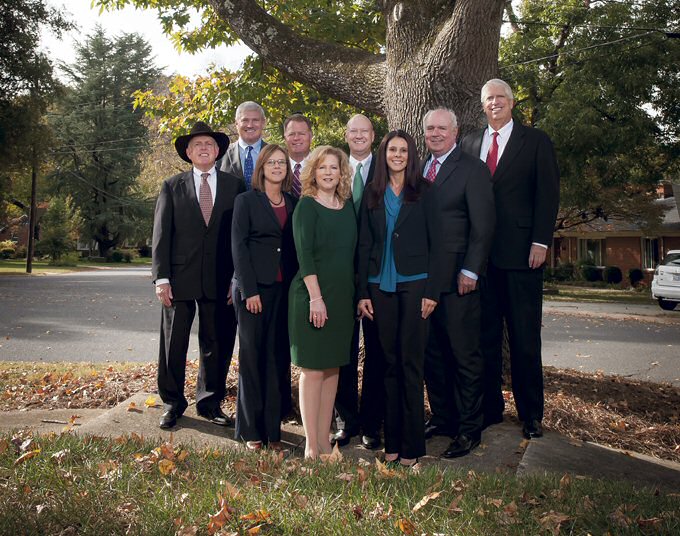Opportunities and recommendations for next year’s specialty lines market
On October 21, 2016, the attacks began. An online offensive against domain name server (DNS) provider Dyn, Inc. caused outages to some of the Internet’s top sites, including Amazon, Netflix, Twitter, and Spotify. Apparently capitalizing on vulnerable devices, such as Internet-capable refrigerators, smart thermostats, and other devices that lack the standard firewalls, the attackers brought down scores of high-profile websites. The malicious attacks targeted what Dyn officials estimate were 100,000 connected devices, which were hijacked and used to flood Dyn’s systems, effectively shutting out access for millions of users.
According to GO-Gulf research, the global cyber security market is expected to reach $120.1 billion in 2017, nearly double the $63.7 billion total of 2011. While it’s too early to tell how much the distributed denial-of-service attack (DDoS) of October cost businesses and consumers, the annual estimated cost of global cybercrime is $100 billion, according to statistics from GO-Gulf, a web development firm.
Such attacks most likely will have an impact on the specialty lines market, says Bernd G. Heinze, executive director of the American Association of Managing General Agents (AAMGA). Heinze says he’s seeing an increase in appetite for cyber risk products, but particularly an increase in customer requests for expertise in choosing the right coverage, because of the large variations in business risks as customers struggle to understand what coverage is best suited to protect their own cyber liabilities. “It’s one thing to buy an off-the-shelf cyber product,” he says. “It’s another to make sure you can manuscript a cyber product to the needs you have. A tanning salon is not going to have the same needs as a hotel or airline will.”
Trends and claim drivers
As cyber liability begins to heat up, Arthur Davis, president of Argo Group’s excess and surplus lines segment, says the rest of the specialty market is soft, with fierce competition made even more so as new entrants come into the space. Davis says all are vying “for market share, and underwriting appetites expand as carriers look for opportunities to grow. Standard markets are increasing their appetites for risks previously written in the E&S space; and the oil-and-gas segment continues to be a challenge.”
Also, Davis says there is activity in claim cases, and that activity is starting to have significant impact on the market. “We have observed a trend in rulings around the country, broadening an insurer’s duty to defend additional insureds,” he says. “It appears courts are more frequently finding a duty to defend additional insureds than they have in the past; and a failure to do so can result in significant settlements and judgments.”
Another area of concern—is professional liability. “What we’ve seen in the variety of the different lines of business is that the frequency and severity of claims have not abated with the same degree of softening of the premium rate,” says Heinze. “So, while premium continues to be challenging and competitive, we have continued to see an increase in frequency and severity in a number of the traditional lines of business. People are seeing that and trying to make sure they’re protected by boosting their coverage through an umbrella or excess policy.”
Another concern, says Heinze, is determining how long a tail the newer risks will have. Claims involving asbestos and silicosis, he says, are proving to have longer life spans than originally thought. As underwriters look to pricing cyber liability, Heinze says they have to take into consideration how long the impact could last. “Cyber liability is something that’s going to be around a long time,” Heinze says. “It’s more than hacking, more than cyber security and firewalls. It’s an entirely new way of doing business electronically.”
Impact of technology
Digital concerns, says Davis, are extending beyond cyber risks. He sees technology driving a shift in the overall customer experience. “What clients once expected in days, they now expect in hours,” he says. “E&S insurers need to stay ahead of the trend to stay relevant with their customers. Data science and predictive analytics are changing the way risks are assessed and ultimately priced, and we see those refinements continuing in the future.”
Those changes are being punctuated by new market entrants from nontraditional providers, such as Google, Facebook, and Lemonade, says Heinze. He says these entities are offering unique pricing and underwriting options that challenge traditional models. Yet he sees the disruption not as more competition, but as a way for agents and brokers to differentiate. He suggests employing an approach that combines underwriting proficiency with the expertise not found in the newer entities “in such a way that you’re causing the differentiator to be on your side of the ledger,” he says. “Will they be able to serve the business they’re writing? Will they be able to handle the claims in a proper way?”
Heinze says that while these risks begin to take shape, there is also opportunity growing within the traditional lines of business. “We are evaluating where people’s risks are and the new ways they’re transacting their day-to-day operations and responding accordingly with proper terms and conditions, and better coverage for them.”
Opportunities
Beyond cyber business, Davis sees plentiful capacity in the catastrophe property arena, and a highly competitive environment. Cyber coverage, he says, is being offered as an enhancement to existing products, as well as on a stand-alone basis. Professional lines of business, according to Heinze, are also providing opportunities, particularly on the E&O, D&O and product liability side. Construction business also has increased, Heinze adds, with public and private commercial entities increasing their construction activity.
Also, insurer activity is creating a better environment for agents and brokers, Davis adds. “It appears that the pace of agency and carrier acquisitions has slowed a bit, but consolidation will clearly continue for some time. It’s a healthy process that will drive all involved to be more efficient to survive and thrive in the specialty market.”
As for claims, Heinze says that AAMGA members are taking steps to guard against increasing defense costs and allocated loss adjustment expenses. “Our members are consistently looking at alternative dispute resolution and other opportunities that may be overlooked, like for mediation or arbitration or early settlement, in order to resolve the conflict more expeditiously and economically, both for the policyholder and the insurer.”
Davis says that within the contractor and property side, he’s seen indemnification obligations arising out of underlying contracts, as well as respective tenders made by additional insureds. “Agents and brokers can help their clients by advising them to have their contracts reviewed by an attorney to enhance the likelihood that the risks will be transferred in the manner anticipated.”
Recommendations
Both Davis and Heinze believe that technology and cyber issues, while challenging, can help agents and brokers remain relevant to customers. “Just as carriers are focusing on technology efficiencies, agents and brokers are using technology to drive results,” Davis says. “Many agents are improving customer responsiveness while also highlighting coverage nuances, as well as pricing differences.”
As customers look more frequently to their brokers and agents for guidance, Heinze says a marriage of data analytics and risk management can be a great partnership that creates new ways to analyze and mitigate loss. In a market that’s increasingly automated, he says it’s a chance for agents and brokers to differentiate. “We need to remain vigilant and constantly look for ways to cultivate and sustain this marketplace, and realize that the way we did things yesterday is not the way things are going to be done tomorrow.”
The author
Lori Widmer is a Philadelphia-based writer and editor who specializes in insurance and risk management.






